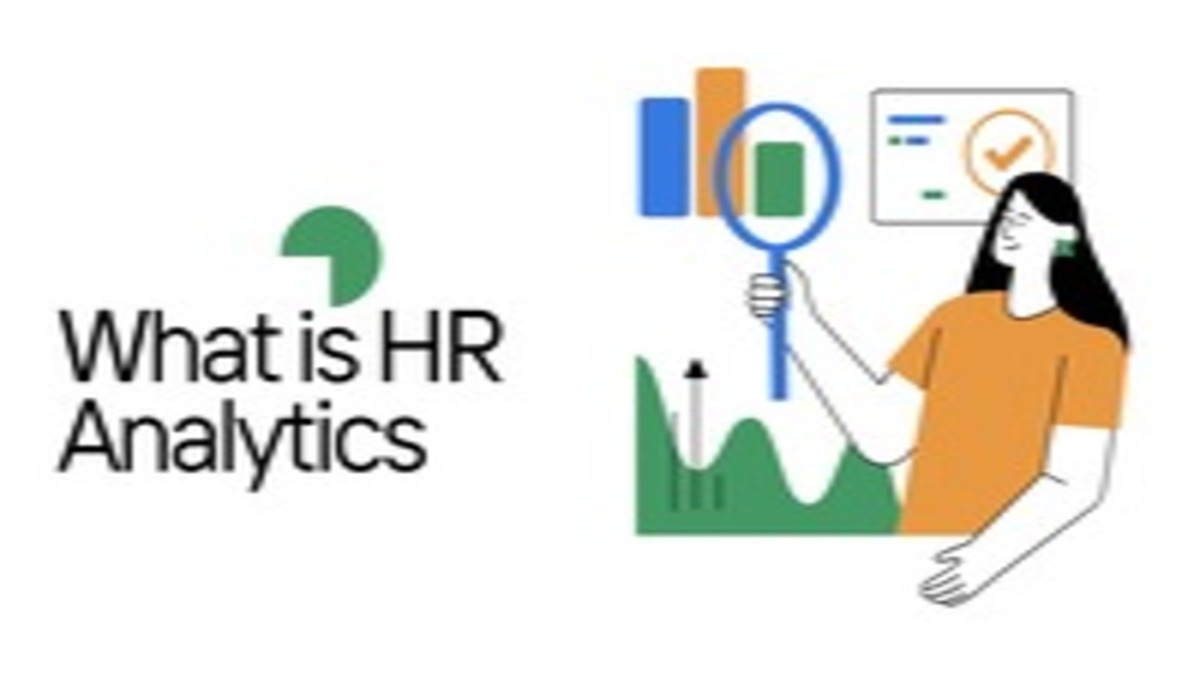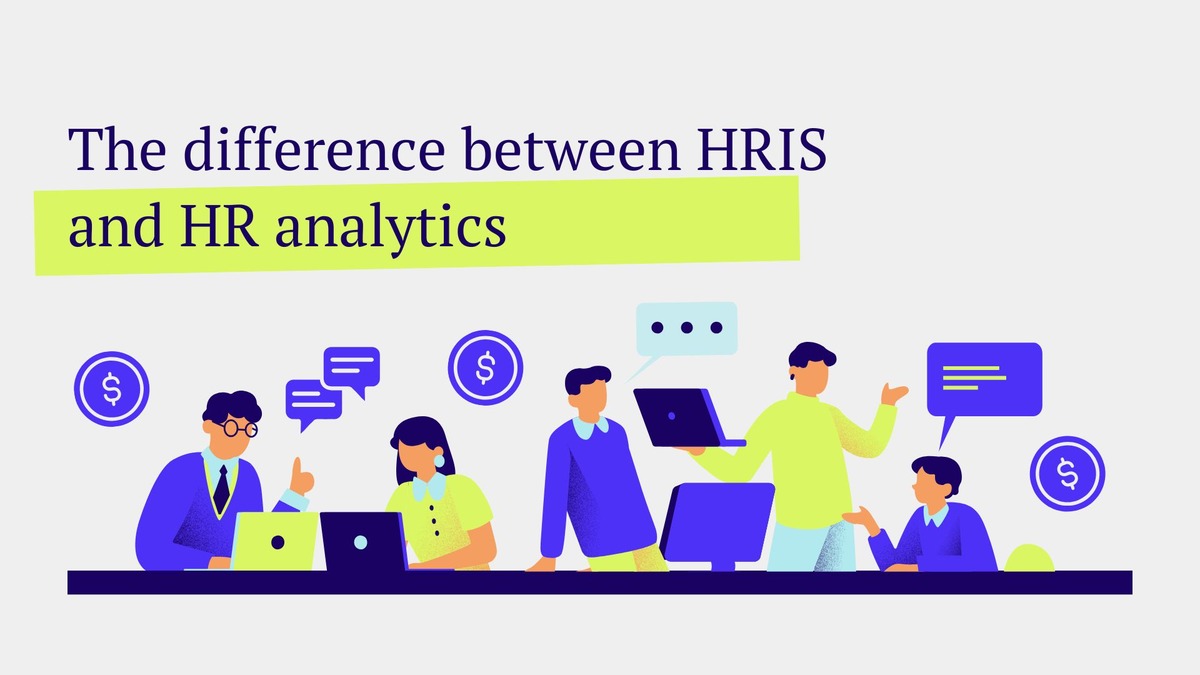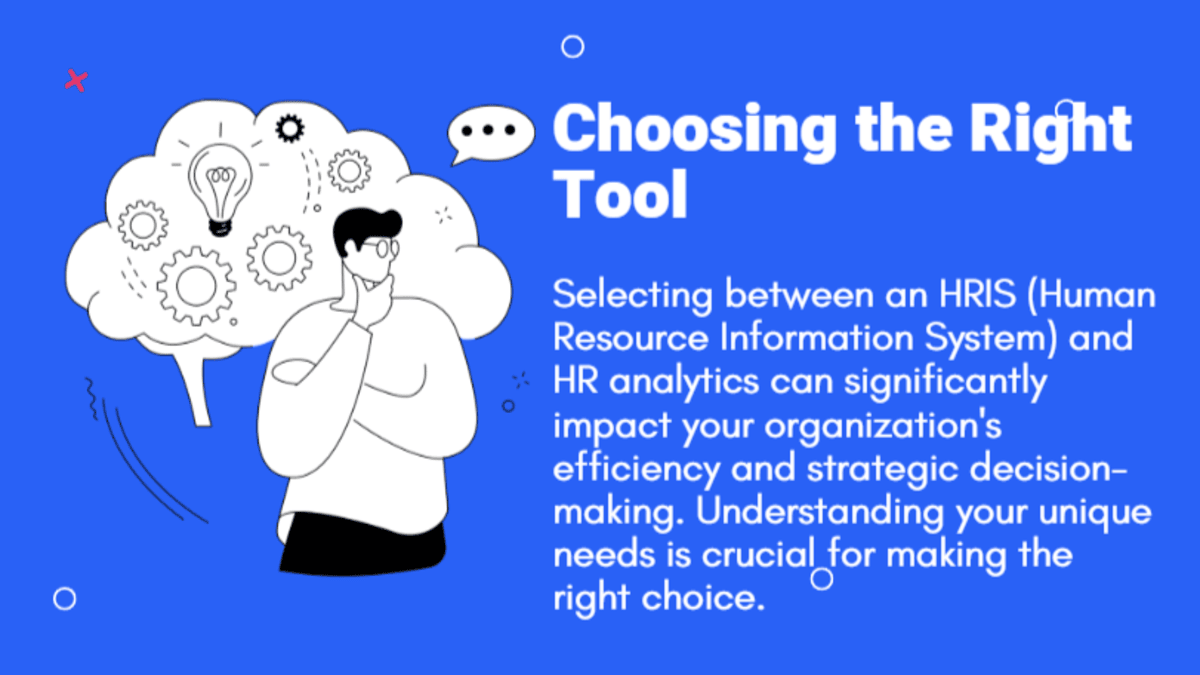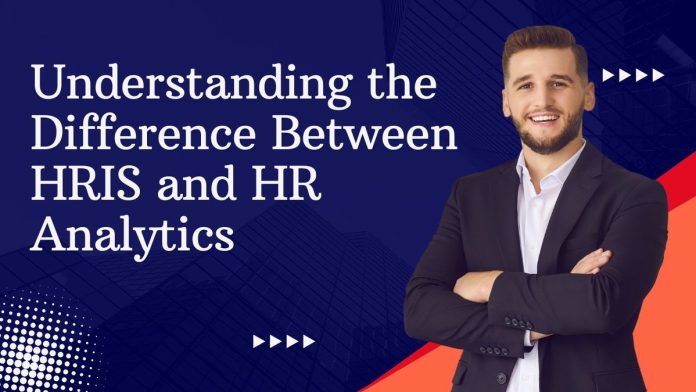Effective human resource management is key to a company’s success. HRIS and HR Analytics are two important tools that help with this. At first, they may seem similar, but they serve different purposes. When used together, they provide great value to businesses.
What is HRIS or Human Resource Information System?

Human Resource Information Systems (HRIS) exists as a software that enables HR departments to automate regular operations. HRIS operates in one location as a single information hub to maintain employee records including personal details together with positions and payroll information as well as benefit administration documents. HRIS systems automate daily attendance tracking alongside performance review processes so that human resource professionals gain time to handle strategic projects. As the organizational foundation for HR operations it improves data organization while enhancing compliance tracking and enhancing administrative work processes.
Core Functions of HRIS
Human Resource Information Systems (HRIS) play an essential role in today’s organizations by acting as a centralized hub for employee data management. At its core, HRIS streamlines various HR processes and enhances operational efficiency.
1. Recruitment Process
Firstly, HRIS simplifies the recruitment process. From posting job openings to tracking applicants and managing interview schedules, recruitment becomes a more organized and less time-consuming endeavor. Secondly, HRIS is indispensable for employee record management. It securely stores and retrieves personal and professional information, ensuring that data is readily accessible when needed.
2. Simplified Payroll Processing
Additionally, payroll processing is another vital function of HRIS. It handles everything from salary calculations and deductions to tax filings, ensuring that employees are paid accurately and on time. In conjunction with payroll, benefits administration is also managed through HRIS. This includes health insurance, retirement plans, and other employee benefits, making it easier for HR managers to oversee and update plans as necessary.
3. Training and Development
Moreover, HRIS extends its functionality to training and development . Managers can facilitate learning modules, track employee progress, and identify areas for skill enhancement. Performance management is also streamlined, with HRIS providing tools for setting goals, conducting evaluations, and recording performance metrics.
4. Compliance with Legal Requirements
Compliance with legal requirements is another critical function. By maintaining accurate records and automating compliance reporting, HRIS helps organizations adhere to labor laws and regulations, minimizing the risk of penalties.
Overall, the core functions of an HRIS revolve around centralizing and automating routine HR tasks, thereby freeing up valuable time for HR professionals to focus on strategic initiatives. This makes HRIS an integral component in the toolkit of modern HR departments.
What is HR Analytics?

On the other hand, HR Analytics dives deeper into the data stored within HRIS and other systems. It’s the practice of applying statistical methods and analytics tools to gain insights from HR data. By leveraging HR Analytics, organizations can uncover trends and predict future outcomes related to workforce behavior, employee performance, and organizational efficiency. This data-driven approach helps leaders make informed, strategic decisions regarding hiring, employee development, and retention strategies.
In summary, HRIS focuses on managing and automating HR tasks and processes, while HR Analytics is all about extracting actionable insights from HR data to drive better decision-making. Understanding the roles and capabilities of each can help organizations optimize their HR function and create a more efficient and engaged workforce.
Core Functions of HR Analytics
HR Analytics goes beyond data storage to provide insightful, actionable metrics that drive decision-making in human resources. Some of its core functions include:
1. Workforce Planning and Forecasting
HR Analytics helps organizations anticipate future staffing needs based on current trends and historical data. This enables more strategic recruitment efforts and better resource allocation.
2. Talent Acquisition and Retention
By analyzing data on employee performance, engagement, and turnover, HR Analytics can help identify patterns and trends in talent retention. This information can guide initiatives to improve employee satisfaction and retention rates.
3. Employee Performance Evaluation
Performance metrics gathered through HR Analytics offer in-depth insights into individual and team productivity. This allows for more effective performance reviews and development plans that align with organizational goals.
4. Compensation and Benefits Analysis
HR Analytics can assess the effectiveness of existing compensation and benefits packages. This includes analyzing market trends and internal pay structures to ensure competitiveness and fairness, which, in turn, aids in attracting and retaining top talent.
5. Diversity and Inclusion Initiatives
With HR Analytics, organizations can measure and analyze the effectiveness of their diversity and inclusion programs. By identifying gaps and areas for improvement, they can develop strategies to foster a more inclusive workplace.
6. Training and Development Assessment
HR Analytics evaluates the impact of training programs on employee performance and growth. This helps ensure that learning initiatives are effective and aligned with the organization’s objectives.
In today’s data-driven world, HR Analytics serves as a powerful tool that transforms raw data into strategic insights, ultimately enhancing organizational performance and employee satisfaction.
Key Differences between HRIS and HR Analytics

When it comes to Human Resource management, understanding the key distinctions between Human Resource Information Systems (HRIS) and HR analytics is crucial for organizational success.
- HRIS is essentially a digital tool used to manage and streamline various HR activities such as employee records, payroll, benefits, and recruitment. It’s a centralized platform where data is stored and managed efficiently. HRIS helps HR professionals maintain accurate employee data, streamline administrative tasks, and ensure compliance with labor laws.
- On the other hand, HR analytics dives deeper into the data stored in HRIS. It’s all about analyzing this data to make informed decisions. HR analytics uses sophisticated techniques to identify patterns, trends, and insights. By leveraging this data, HR professionals can make predictions, measure workforce performance, and strategize improvements.
So, the main difference lies in their primary functions. HRIS focuses on collecting and storing information, automating processes, and ensuring compliance. It’s about efficiency and record-keeping. Conversely, HR analytics is geared towards insight and strategy. It transforms raw data into meaningful insights that can drive policy-making and strategic planning.
To sum it up, while HRIS acts as the backbone of HR operations, HR analytics serves as the brain that interprets data for smarter decision-making. Both are invaluable, but their roles and functionalities differ significantly. Organizations should recognize these differences to effectively leverage both tools for optimal HR management.
Choosing the Right Tool for Your Organization

Selecting between an HRIS (Human Resource Information System) and HR analytics can significantly impact your organization’s efficiency and strategic decision-making. Understanding your unique needs is crucial for making the right choice.
- HRIS is ideal for companies looking to streamline basic HR functions. If your primary focus is on managing employee records, payroll, benefits administration, and compliance, an HRIS can serve as the backbone of your HR department. It helps automate routine tasks, ensuring accuracy and freeing up HR personnel for more critical functions.
- On the other hand, HR analytics goes beyond basic data management. It’s a powerful tool for organizations aiming to leverage data for strategic insights. If you want to understand workforce trends, predict future staffing needs, or analyze employee performance and retention, HR analytics offers advanced capabilities. These insights can drive more informed decisions about talent management, employee engagement, and productivity improvements.
- It’s also worth noting that many modern HRIS platforms now include basic analytics features. However, if deep data analysis and predictive modeling are crucial for your HR strategy, investing in dedicated HR analytics software might be the better route.
- Ultimately, the choice depends on your organization’s specific requirements and long-term goals. For businesses in growth phases, where strategic planning is pivotal, combining both HRIS and HR analytics may provide the most comprehensive solution.
By carefully evaluating your needs, you can choose the right tool or combination of tools, ensuring that your HR operations are both efficient and strategically aligned with your business objectives.
How to make a decision?
Choosing between HRIS and HR analytics doesn’t have to be a challenging decision. Often, these tools complement each other and can be used together for maximum impact. While HRIS handles the day-to-day transactional side of HR, HR analytics provides the strategic vision needed to drive long-term success. By leveraging the strengths of both systems, organizations can create a balanced and effective HR strategy that not only meets immediate needs but also supports future growth.
Ultimately, investing in the right HR tools helps build a strong foundation for a more dynamic, responsive, and successful HR function. Make a thoughtful choice that aligns with your organization’s specific needs and objectives, and watch your HR operations transform for the better.
Conclusion: Streamlining HR with the Right Tools
Streamlining HR processes is crucial for the efficiency and growth of any organization. The right tools, specifically HRIS and HR analytics, play a vital role in achieving this goal. Integrating an HRIS system can centralize employee data, manage payroll, track performance, and automate numerous administrative tasks, significantly reducing the burden on HR teams. This system fosters a more organized and productive workflow, allowing HR professionals to focus on strategic planning and employee engagement.
On the other hand, HR analytics offers powerful insights by analyzing workforce data. It helps in identifying trends, forecasting potential issues, and making informed decisions that align with the business objectives. HR analytics goes beyond just data collection; it transforms raw data into valuable information that can optimize talent management, improve employee retention, and enhance overall organizational performance.
Read More:What is a SaaS ERP solution?

